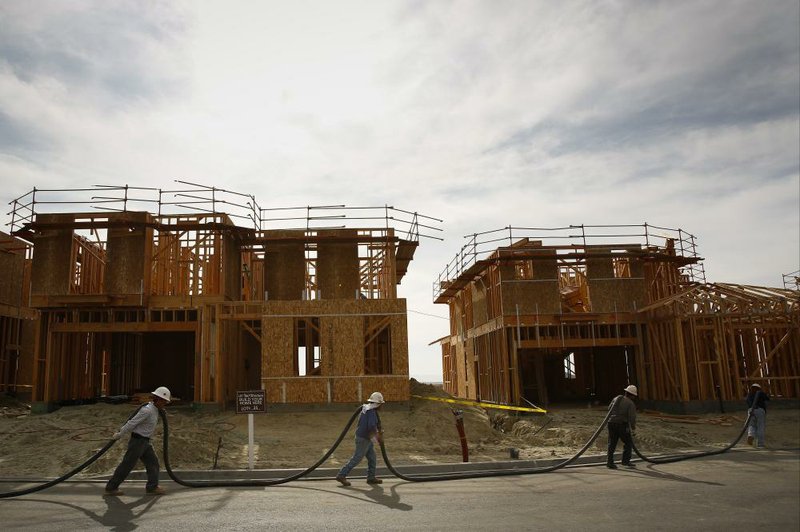WASHINGTON - Sales of new homes in the U.S. rebounded in January to the fastest pace in more than five years.
Sales of new homes increased 9.6 percent in January to a seasonally adjusted annual rate of 468,000, the Commerce Department said Wednesday. That was the fastest pace since July 2008.
The rise came as a surprise to economists who had been forecasting a sales drop in January, in part because of a belief that activity would be held back by bad winter storms in many parts of the country.
Sales had fallen 3.8 percent in December and 1.8 percent in November, leading to worries that the housing recovery could be losing momentum.
“I’m hopeful the recovery in home sales will get back on track in the next couple of months,” said Jim O’Sullivan, chief U.S. economist at High Frequency Economics in Valhalla, N.Y. “If we continue to get solid employment growth, which was the trend last year, chances are you’ll see home sales continue their uptrend.”
The big January gain was likely to ease economic concerns. Many economists believe sales of both new and previously owned homes will rise in 2014, helped by an improving economy and job gains that will increase the number of people working.
The median price of a new home sold in January was up 3.4 percent from a year ago to $260,100.
The sales gain was led by a 73.7 percent surge in sales in the Northeast. Sales were up 11 percent in the West and 10.4 percent in the South. The only region to see a sales decline was the Midwest, where sales fell 17.2 percent, likely a reflection of blizzards that hit the region.
Sales for all of 2013 rose to 428,000, the highest point in five years and an increase of 16.3 percent from 2012.
Economists expect sales to grow more this year, although they do not expect the gain to be as robust as the 2013 increase.
Executives at Mohawk Industries in Calhoun, Ga., which makes residential and commercial flooring, still see strength for the industry in the year ahead.
“Our future optimism is supported by a number of leading indicators that anticipate continued improvement in new construction and remodeling,” Chief Executive Officer Jeffrey Lorberbaum said Friday during an earnings call.
“The improvement in remodeling is being driven by an improving economy, higher housing prices as well as growing sales of existing homes,” Lorberbaum said.
Home price increases are expected to moderate in 2014. The Standard & Poor’s/Case-Shiller 20-city home price index rose by a healthy 13.4 percent in 2013. That was the largest calendar gain in eight years.
Economists are looking for further sales gains as the economy continues to gain momentum and more people are able to get jobs. Further gains in home sales will spur more jobs in the construction industry and help support economic growth.
The National Association of Realtors reported last week that sales of previously owned homes plummeted in January to an annual rate of 4.62 million units. That was down 5.1 percent from the December pace.
Freezing temperatures and snowstorms caused a slip in housing activity this winter while higher mortgage rates and higher prices had acted to slow growth earlier in the year.
The average rate on a 30-year mortgage rose to 4.33 percent last week, up from 4.28 percent the previous week. Rates surged about 1.25 percentage points from May through September, peaking at 4.6 percent. Those increases began after the Federal Reserve signaled last spring that it expected to start slowing its bond-buying program before the end of the year.
Those Fed bond purchases were designed to keep long term interest rates low to stimulate more borrowing and give the economy a boost. The Fed in December and January did announce $10 billion reductions in its bond purchases, taking them from $85 billion per month down to $65 billion per month.
It is expected, as long as the economy and the job market keep improving, that the Fed will keep reducing bond purchases in moderate steps until the program is phased out entirely by the end of the year.
The economy is also expected to show greater strength with many analysts expecting overall growth to climb to close to 3 percent this year, up from just 1.9 percent in 2013.
Information for this article was contributed by Martin Crutsinger of The Associated Press and Michelle Jamrisko and Chris Middleton of Bloomberg News.
Business, Pages 25 on 02/27/2014
